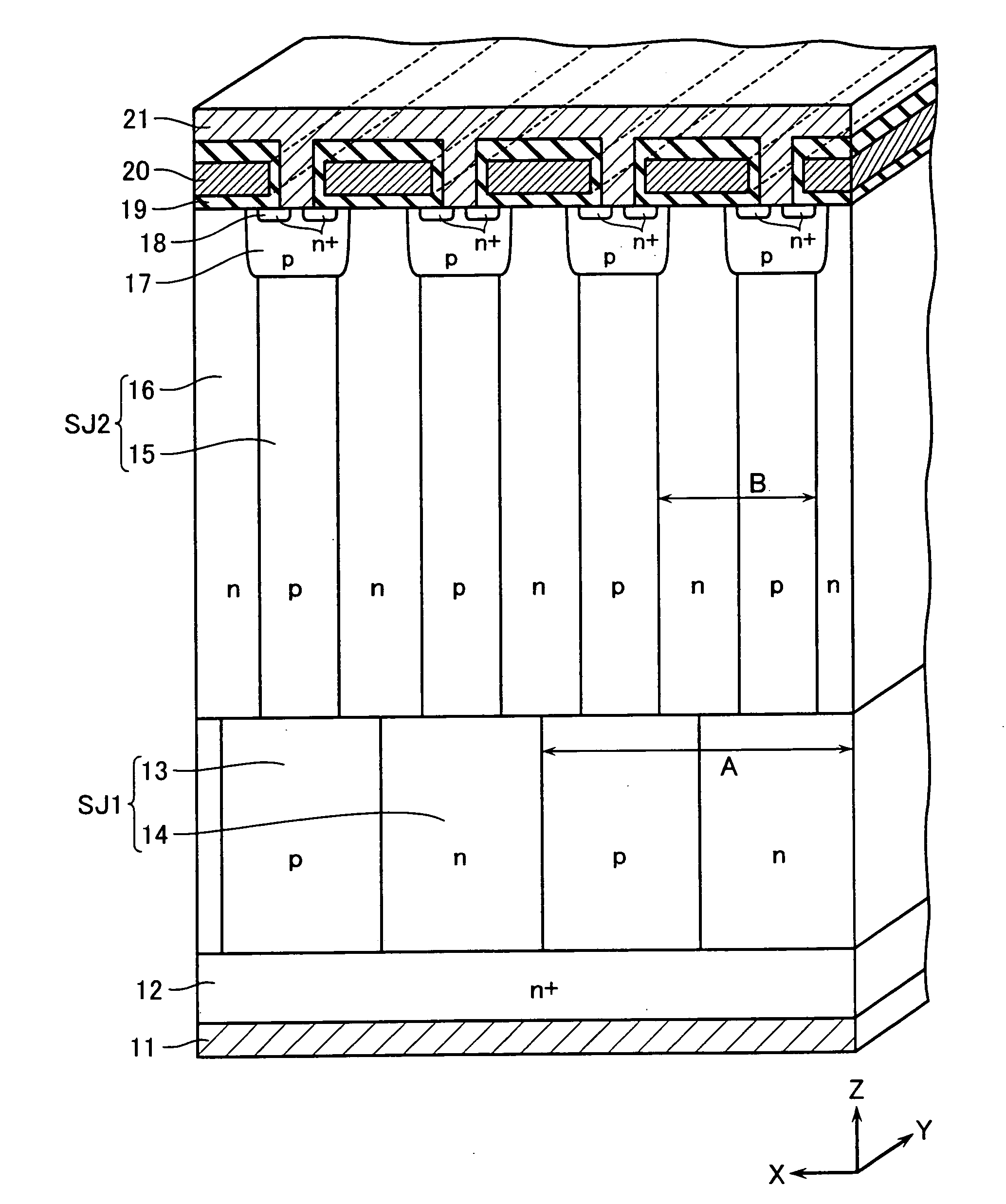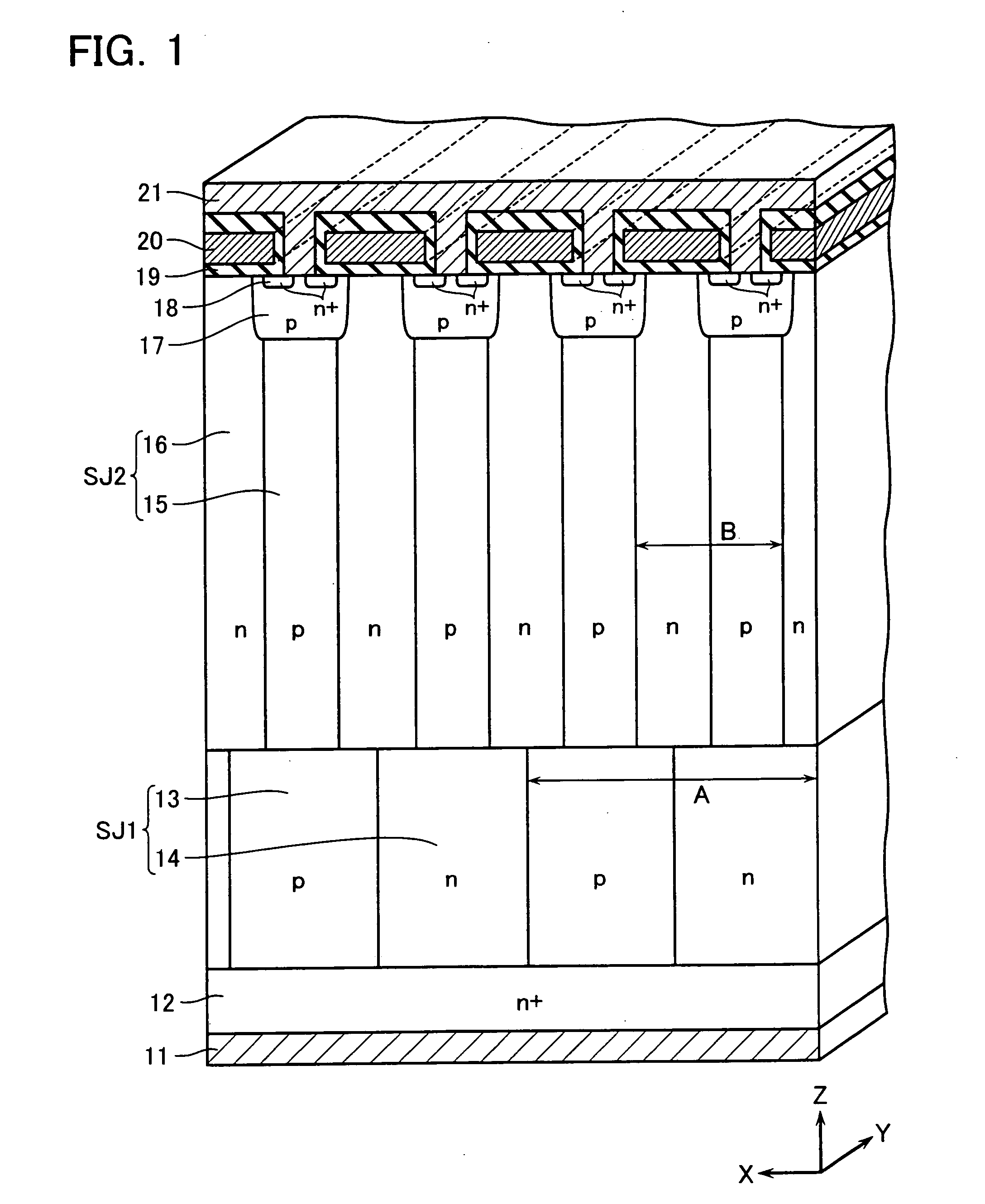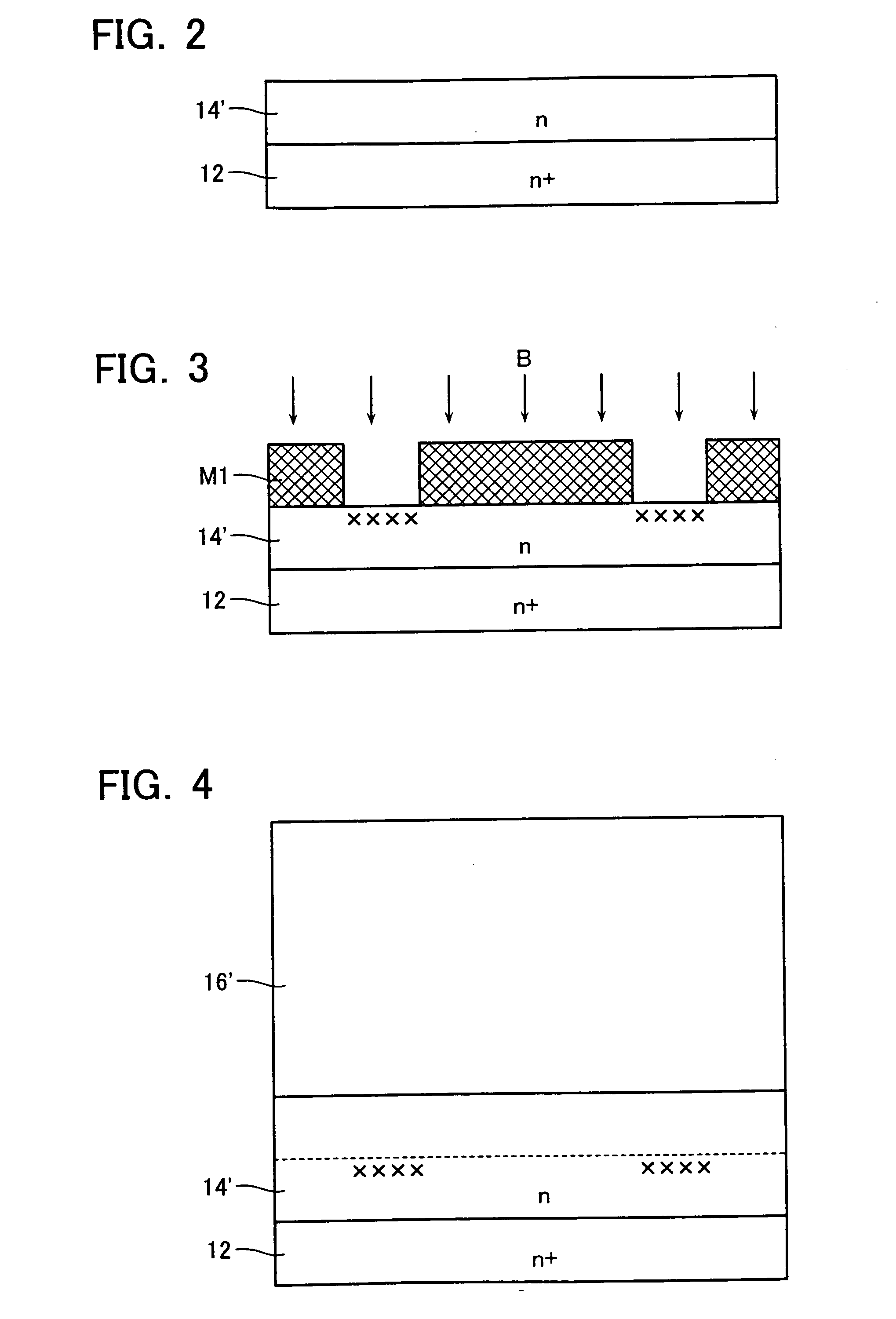Semiconductor device and method of fabricating the same
a technology of semiconductors and devices, applied in the direction of semiconductor devices, basic electric elements, electrical equipment, etc., can solve the problems of the trade-off between the breakdown voltage and the on-resistance of the devi
- Summary
- Abstract
- Description
- Claims
- Application Information
AI Technical Summary
Benefits of technology
Problems solved by technology
Method used
Image
Examples
first embodiment
[0035]FIG. 1 is a cross-sectional view schematically showing a structure of a power MOSFET according to a first embodiment of the present invention. This MOSFET includes an n+-type drain layer 12. A lower pillar layer SJ1 is formed on the upper surface of the n+-type drain layer 12, and an upper pillar layer SJ2 is stacked thereon. Thus, the MOSFET adopts a superjunction structure having a drift layer with a two-layered structure of the lower pillar layer SJ1 and the upper pillar layer SJ2.
[0036] The lower pillar layer SJ1 includes lower p-type pillar layers 13 and lower n-type pillar layers 14 formed alternatively at a lateral period A. On the other hand, the upper pillar layer SJ2 includes upper p-type pillar layers 15 and upper n-type pillar layers 16 formed alternatively at a lateral period B smaller than the period A (B14 is connected to the upper n-type pillar layer 16 to form a drift layer successively. In this embodiment, the pillar layers 13, 14, 15, 16 each have a stripe ...
second embodiment
[0054]FIG. 17 is a cross-sectional view schematically showing a structure of a power MOSFET according to a second embodiment of the present invention. The same parts as those in FIG. 1 are omitted from the following detailed description and only different parts are described herein.
[0055] The structure shown in FIG. 17 is the same as the structure of the first embodiment because the upper and lower pillar layers SJ1 and SJ2 are formed in the shape of stripes. It is different from the first embodiment, however, in that the pillar layers SJ1 and SJ2 are arranged such that the directions of extension of the stripe shapes intersect at a right angle. In the structure of the second embodiment, even if an error occurs in alignment of the upper and lower pillar layers SJ1 and SJ2, an increase in on-resistance can be suppressed. In a word, even when the upper and lower pillar layers SJ1 and SJ2 are formed in the shape of stripes and the directions of extension are determined in an identical...
third embodiment
[0056]FIG. 18 is a cross-sectional view schematically showing a structure of a power MOSFET according to a third embodiment of the present invention. The same parts as those in FIG. 1 are omitted from the following detailed description and only different parts are described herein.
[0057] In the structure shown in FIG. 18, the upper pillar layer SJ2 is formed in the shape of stripes similar to those in the above embodiments. On the contrary, the lower pillar layer SJ1 is formed such that the lower p-type pillar layers 13 are buried in the shape of a grid in an n-type layer, which is to be turned intothelowern-typepillarlayers14. Thus, in the lower p-type pillar layers 13, the current path connected to any one of the upper p-type pillar layers 15 is not broken. Accordingly, the on-resistance is prevented from increasing and the process can be simplified.
[0058] The lower p-type pillar layers 13 have a grid formation period A, which is made larger than the lateral period B in the uppe...
PUM
 Login to View More
Login to View More Abstract
Description
Claims
Application Information
 Login to View More
Login to View More - R&D
- Intellectual Property
- Life Sciences
- Materials
- Tech Scout
- Unparalleled Data Quality
- Higher Quality Content
- 60% Fewer Hallucinations
Browse by: Latest US Patents, China's latest patents, Technical Efficacy Thesaurus, Application Domain, Technology Topic, Popular Technical Reports.
© 2025 PatSnap. All rights reserved.Legal|Privacy policy|Modern Slavery Act Transparency Statement|Sitemap|About US| Contact US: help@patsnap.com



